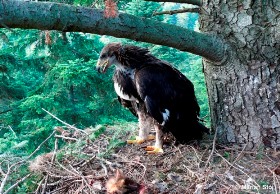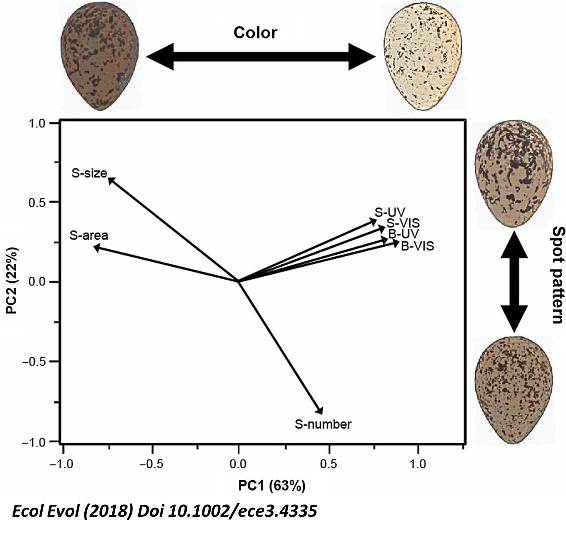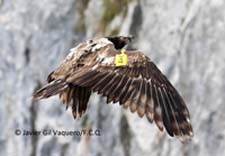Animals living on the earth's surface are protected from the damaging effects of solar ultraviolet (UV) radiation by melanin pigments that color their integument. UV levels that reach the earth's surface vary spatially, but the role of UV exposure in shaping clinal variations in animal pigmentation has never been tested. Here it is shown at a continental scale in Europe that golden eagles Aquila chrysaetos reared in territories with a high solar UV-B radiation exposure deposit lower amounts of the sulphurated form of melanin (pheomelanin) in feathers and consequently develop darker plumage phenotypes than eagles from territories with lower radiation exposure. This clinal variation in pigmentation is also explained by terrestrial gamma radiation levels in the rearing territories by a similar effect on the pheomelanin content of feathers, unveiling natural radioactivity as a previously unsuspected factor shaping animal pigmentation. These findings show for the first time the potential of solar and terrestrial radiations to explain pigmentation phenotype diversity in animals, including humans, at large spatial scales. informacion[at]ebd.csic.es: Galván et al (2018) Solar and terrestrial radiations explain continental-scale variation in bird pigmentation. Oecologia Doi 10.1007/s00442-018-4238-8
https://link.springer.com/article/10.1007/s00442-018-4238-8

 Solar and terrestrial radiations explain continental-scale variation in bird pigmentation
Solar and terrestrial radiations explain continental-scale variation in bird pigmentation


